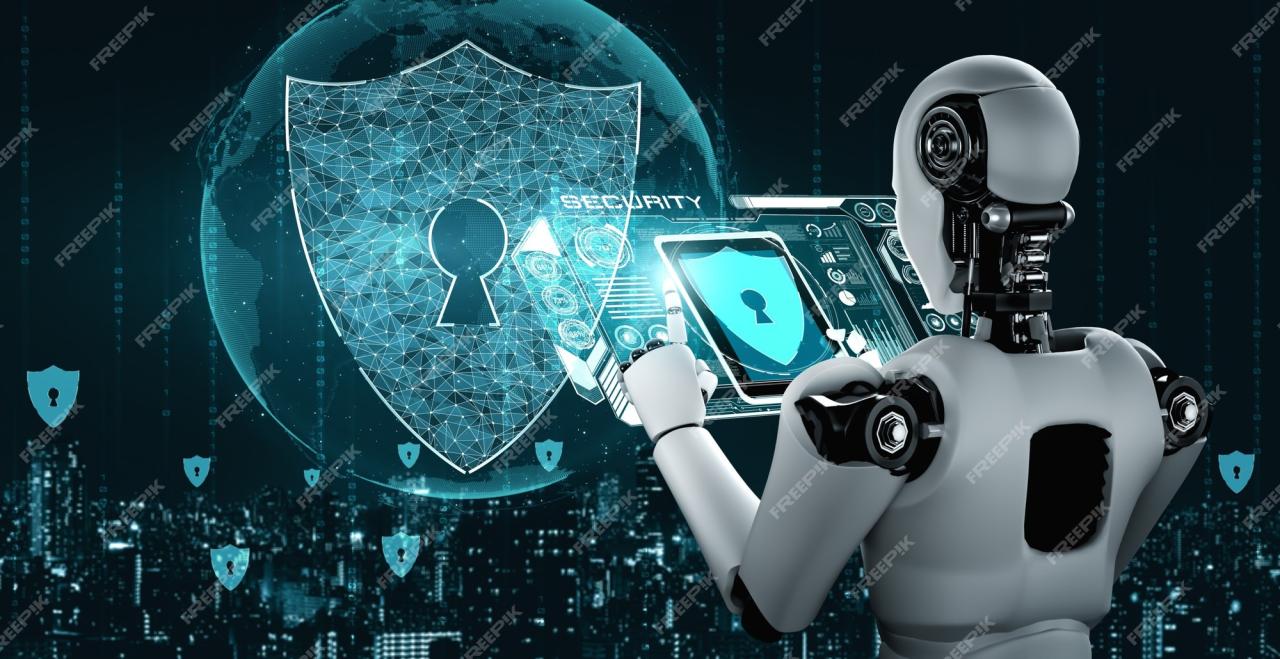

The Future of AI in Cybersecurity: A New Era of Protection
The rapid growth of Artificial Intelligence (AI) in recent years has revolutionized numerous industries, including cybersecurity. As cyber threats continue to evolve and become more sophisticated, traditional security measures are no longer sufficient to counter these attacks. The integration of AI in cybersecurity has become essential to stay ahead of cybercriminals and protect sensitive data. In this article, we will explore the future of AI in cybersecurity, its benefits, and the challenges that come with it.
The Rise of AI in Cybersecurity
Cybersecurity is a cat-and-mouse game between security professionals and cybercriminals. The latter constantly develop new tactics to breach systems, while the former must adapt and innovate to stay ahead. AI has become a game-changer in this fight, enabling security teams to detect and respond to threats more efficiently and effectively.
According to a report by MarketsandMarkets, the AI in cybersecurity market is expected to grow from $10.7 billion in 2020 to $35.4 billion by 2025, at a Compound Annual Growth Rate (CAGR) of 24.1% during the forecast period. This growth is driven by the increasing need for organizations to protect themselves against advanced cyber threats, such as malware, phishing, and ransomware attacks.
Benefits of AI in Cybersecurity
The integration of AI in cybersecurity offers numerous benefits, including:
Enhanced Threat Detection
AI-powered systems can analyze vast amounts of data in real-time, enabling them to detect threats that traditional security systems might miss. Machine learning algorithms can identify patterns and anomalies in network traffic, helping to identify potential threats before they cause harm.
Improved Incident Response
AI can automate incident response, reducing the time and resources required to respond to security breaches. AI-powered systems can analyze security event logs, identify the root cause of the breach, and respond accordingly, minimizing the damage caused by the attack.
Increased Efficiency
AI can help reduce the workload of security teams, freeing them up to focus on more complex and high-value tasks. AI-powered systems can automate routine tasks, such as monitoring network traffic and analyzing log files, allowing security teams to focus on more strategic initiatives.
24/7 Monitoring
AI-powered systems can monitor networks 24/7, providing continuous threat detection and response. This ensures that organizations are protected around the clock, even when security teams are not actively monitoring the network.
Challenges of AI in Cybersecurity
While AI has the potential to revolutionize cybersecurity, there are several challenges that organizations must address when implementing AI-powered security solutions. These include:
Data Quality
AI-powered systems require high-quality data to function effectively. Poor data quality can lead to inaccurate threat detection and false positives, which can undermine the effectiveness of AI-powered security solutions.
skill Gap
Implementing AI-powered security solutions requires specialized skills and knowledge. Organizations may need to invest in training and development programs to ensure that their security teams have the necessary skills to effectively utilize AI-powered systems.
Explainability
AI-powered systems can be complex and difficult to understand, making it challenging for security teams to interpret the results. This lack of explainability can undermine trust in AI-powered systems and make it difficult to identify false positives.
Bias
AI-powered systems can be biased, which can lead to inaccurate threat detection and unfair outcomes. Organizations must ensure that their AI-powered systems are fair, transparent, and unbiased.
The Future of AI in Cybersecurity
The future of AI in cybersecurity is promising, with significant advancements expected in the coming years. Some of the trends that are expected to shape the future of AI in cybersecurity include:
Adversarial AI
Adversarial AI refers to the use of AI by cybercriminals to launch more sophisticated attacks. AI-powered systems will need to be able to detect and respond to these types of attacks, which will require significant advancements in AI research and development.
Autonomous Security
Autonomous security refers to the use of AI-powered systems to detect and respond to threats without human intervention. Autonomous security will require significant advancements in AI research and development, as well as changes to organizational policies and procedures.
Explainable AI
Explainable AI refers to the ability of AI-powered systems to provide clear explanations for their decisions and actions. Explainable AI will be essential for building trust in AI-powered security solutions and ensuring that they are fair and transparent.
Human-AI Collaboration
Human-AI collaboration will be essential for effective cybersecurity in the future. AI-powered systems will need to be able to work seamlessly with human security teams, providing them with actionable insights and recommendations.
Conclusion
The future of AI in cybersecurity is exciting, but it also presents several challenges. Organizations must invest in AI-powered security solutions, but they must also address the challenges associated with AI, such as data quality, skill gaps, explainability, and bias. The integration of AI in cybersecurity has the potential to revolutionize the industry, enabling organizations to detect and respond to threats more efficiently and effectively. However, it will require significant advancements in AI research and development, as well as changes to organizational policies and procedures. As AI continues to evolve, it is essential that organizations stay ahead of the curve, embracing the benefits of AI-powered security solutions while addressing the challenges that come with them.




